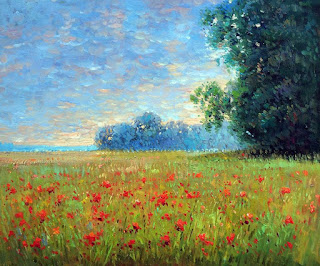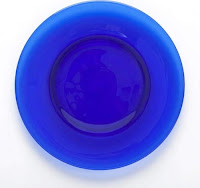“I have been advised in the past, that blue fires
quicker. I was told this by a Master glass maker.”
Viscosity has some relation to colour and intensity. But you should note black & stiff black
are both of the same intensity, and are fusing compatible, but have different
viscosities. This shows that colour is
not the only determinant of viscosity, as the stiff black shows the viscosity
can be adjusted within the same colour. The
quotation above indicates that the reasons behind any declarative statements
need to be investigated.
Some factors in viscosity
Opalescent colours tend to be more viscous than their
transparent counterparts.
It is the metals that develop the colours that produce much
of the difference in viscosity. The same
metal can produce different colours in different furnace conditions, so viscosity
cannot be assumed to be directly related to colour.
Some people in the past have done their own tests on
viscosity and colour relationships, but I have no access to them. More recently Bob Leatherbarrow shows (Firing
Schedules for Kilnformed Glass, 2018, chapter 7.2.5, p.88) some slumping tests
done with opalescent glass. It shows how much less viscous black is than white,
and that white is the most viscous. The
other results show red a little less viscous than white, then some greens,
yellows and oranges, other greens, purple, pinks (in that order) and of course,
the least viscous is black.
Transparent glasses tend to be less viscous than
opalescent glasses.
How does this information relate to kilnforming
practices? It indicates that a piece with
the less viscous glasses requires lower temperatures or less heat work to
complete the forming of the glass than more viscous glasses.
When you have a combination of more and less viscous
glasses in a piece you need to fire more slowly to ensure all the glass is
thoroughly heated through and will deform equally. You will need to observe and be prepared to
move the piece on the mould to straighten it up.
Do your own viscosity tests
You can do your own tests for viscosity differences by
arranging 10mm wide strips all the same length (about 30cm) of different
colours. These should be placed on a kiln washed pair of narrow batts set
parallel to each other 25cm apart and about 15cm high. Fire at about 150°C per hour to about 650°C,
setting the soak to 30 minutes. Observe
at intervals from 620°C. Stop the firing
when the least viscous has almost touched the floor of the kiln. When fired all
together at the same time you can see the relative viscosity of the colours
tested. You can label these and store them,
or tack fuse these labelled curves to a piece of base glass for future
reference.












































